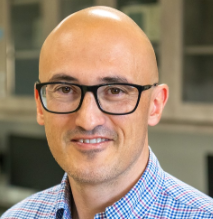These are just some of the scientific questions being asked by pupils in Malta this year for Great Science Share for Schools! In 2024, the collaboration with Malta and Gozo began. Working through the STEM & VET Curriculum Hub and the University of Malta (Faculty of Education), and linking with schools on the island, involvement in this global campaign has ignited passion and enthusiasm amongst Maltese pupils who have been asking, investigating and sharing their science.
What events have taken place?
The Primary STEM Challenge became the place where we were able to link existing practice on the island with GSSfS values. As an annual event, this involves a range of workshops where pupils interact with scientists and think as scientists for themselves
Using the impetus of the 2025 Connected Science theme, the GSSfS team reached out to the organisers of the Primary STEM Challenge to explore how both initiatives could further profile and encourages young pupils to develop scientific thinking, problem-solving skills, and a passion for Science, Technology, Engineering & Mathematics (STEM) subjects. Focused on pupils in Years 3 to 6 (7–11-year-olds) the pupils chose practical scientific investigations that they wished to work on, gather evidence and present their findings. Short videos were made and submitted.
Over 60 primary pupils and 15 primary classroom teachers together with their classes from State and non-State schools participated linking to the themes of Nature, Colours, or Sound.
“By engaging in hands-on, minds-on science investigations, like the Primary STEM Challenge and Great Science Share for Schools, students can actively explore their curiosity and cultivate critical 21st-century skills. This approach fosters evidence-based reasoning, which is essential for developing engaged, informed citizens of tomorrow.”
Below are two videos which give insight into the types of investigations the pupils submitted.
GC Kercem Primary School really shows the GSSfS principle of collaborative and child-led learning with pupils investigating ‘Where do clover seeds grow best?’ They worked collaboratively to investigate different conditions for the clover seeds and how it affected their growth. This investigation explores SDG 15 Life on Land by pupils comparing how clover seeds grew differently in:
the outdoor school garden
indoor in a glass container in direct sunlight
outdoors in a glass container in the shade of a Carob tree.
They measured the soil temperature and air temperature and ensured they took these readings at the same time each day for a month. They measured plant growth and how much the seeds had sprouted and observed the leaves colour to see how that was affected by direct sunlight.
They concluded that the indoor greenhouse provided the perfect conditions for clover seeds to grow. They found that the temperature, moisture and sunlight levels were ideal for fast sprouting in the seeds.
Emilia Calleja used her interests in minibeast habitats to observe a pattern seeking enquiry, ‘Which habitats to living creatures enter the most?’ This investigation was sparked by Emilia’s interests in minibeasts and the natural world and links with Sustainable Development Goal 15 - Life on Land.
She made her own bug hotel and observed over the course of a week which bugs she found in each of the conditions (reeds, dried grass and leaves, dry logs, twigs, stones and small logs). Emilia found out that her prediction was incorrect and that the insects were observed in the reeds and logs rather than just the reeds as she had predicted. A lovely video demonstrating working scientifically through Emilias interests and passions.
In collaboration with The University of Malta, Maltese career chats were developed and resourced to inspire pupils to find out about relatable people working in science industry and education: Brian Zammit an engineer who lectures at The University of Malta and Alan Deidun, a marine biologist at The University of Malta.
Further to this a Primary Science Fair involved 667 9–10-year-old pupils in 47 interactive workshops, all inspired by the theme “Great Inventions: Bridging Science and Society.”
Altogether the GSSfS team and Malta colleagues found a lot in common, in terms of the ethos of enquiry, inclusivity and links to real-world contexts and the UN Sustainable Development Goals
Uplevelling science sharing
Sharing learning took so many different forms from in-person events, to videos and even to highlighting the need and profile of primary science through Malta press.
26 videos were submitted as part of the Primary STEM Challenge!
For those participants who took part in the Primary STEM Challenge, follow this guide to support sharing videos through social media and connecting wider with the GSSfS community: Social media guide.
Looking ahead
The GSSfS team are looking forward to further developing the partnership in Malta next year, developing the relationship between The University of Malta, its scientists, teachers, pupils and use of the GSSfS Toolkit resources to support teachers and pupils on working scientifically.We are looking forward to future collaborations with Maltese scientists who can inspire future generations to aspire to work in STEM careers.
A GSSfS enquiry developed in Malta would be a great way to further collaborate next year and deepen the relationship by encouraging pupils to ask, investigate and share their science thinking linked to curriculum aims and global sustainability goals. Exciting times ahead!









